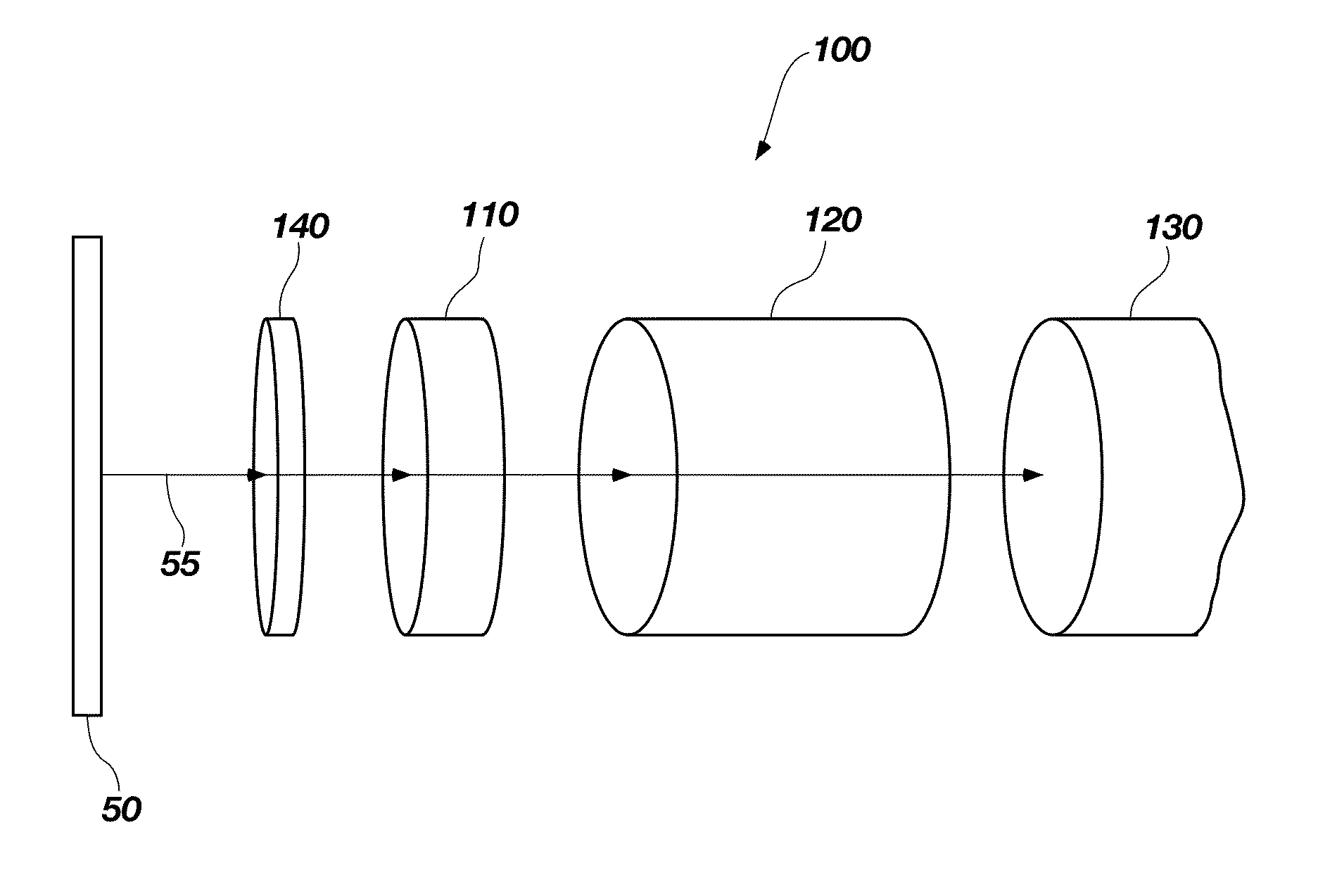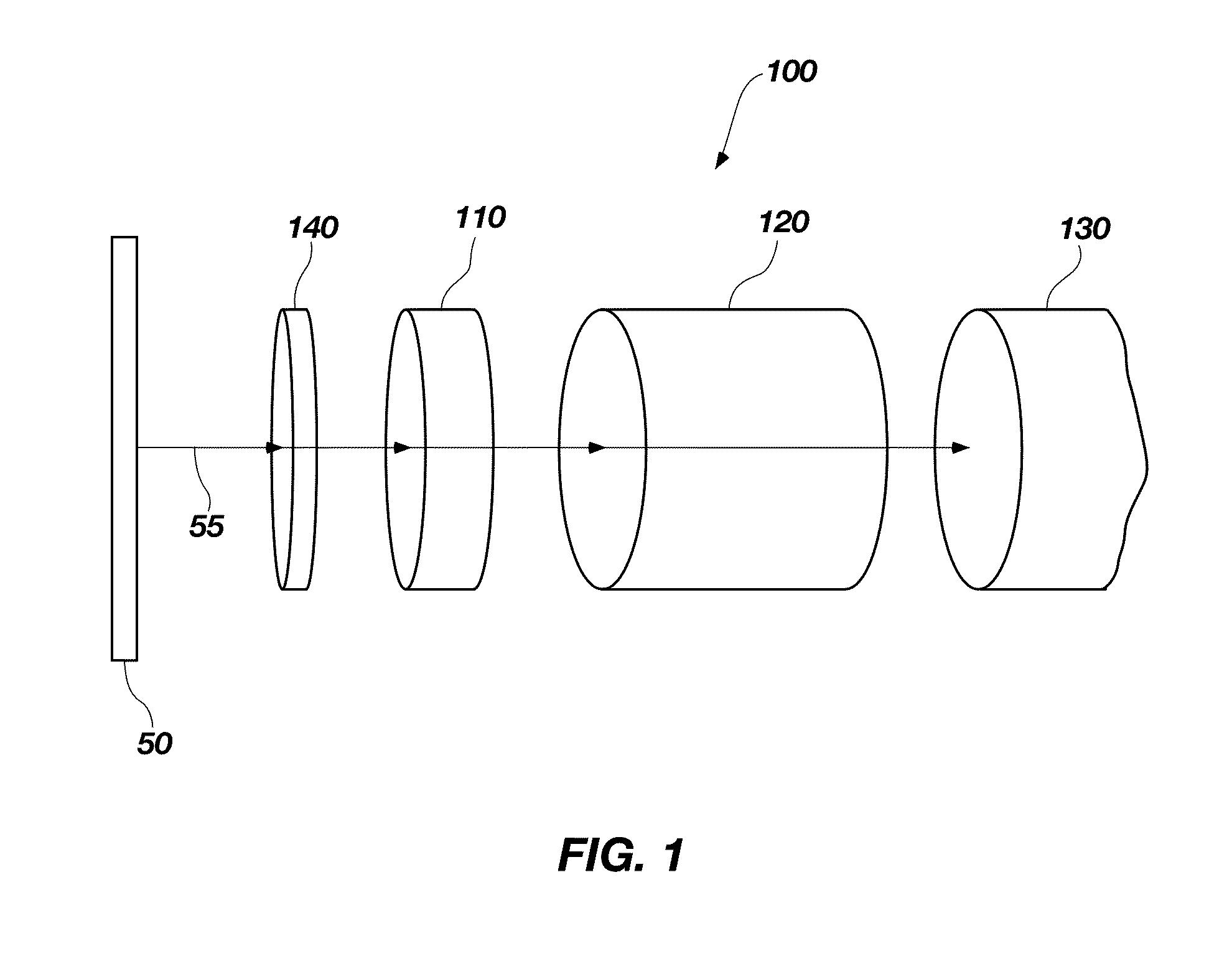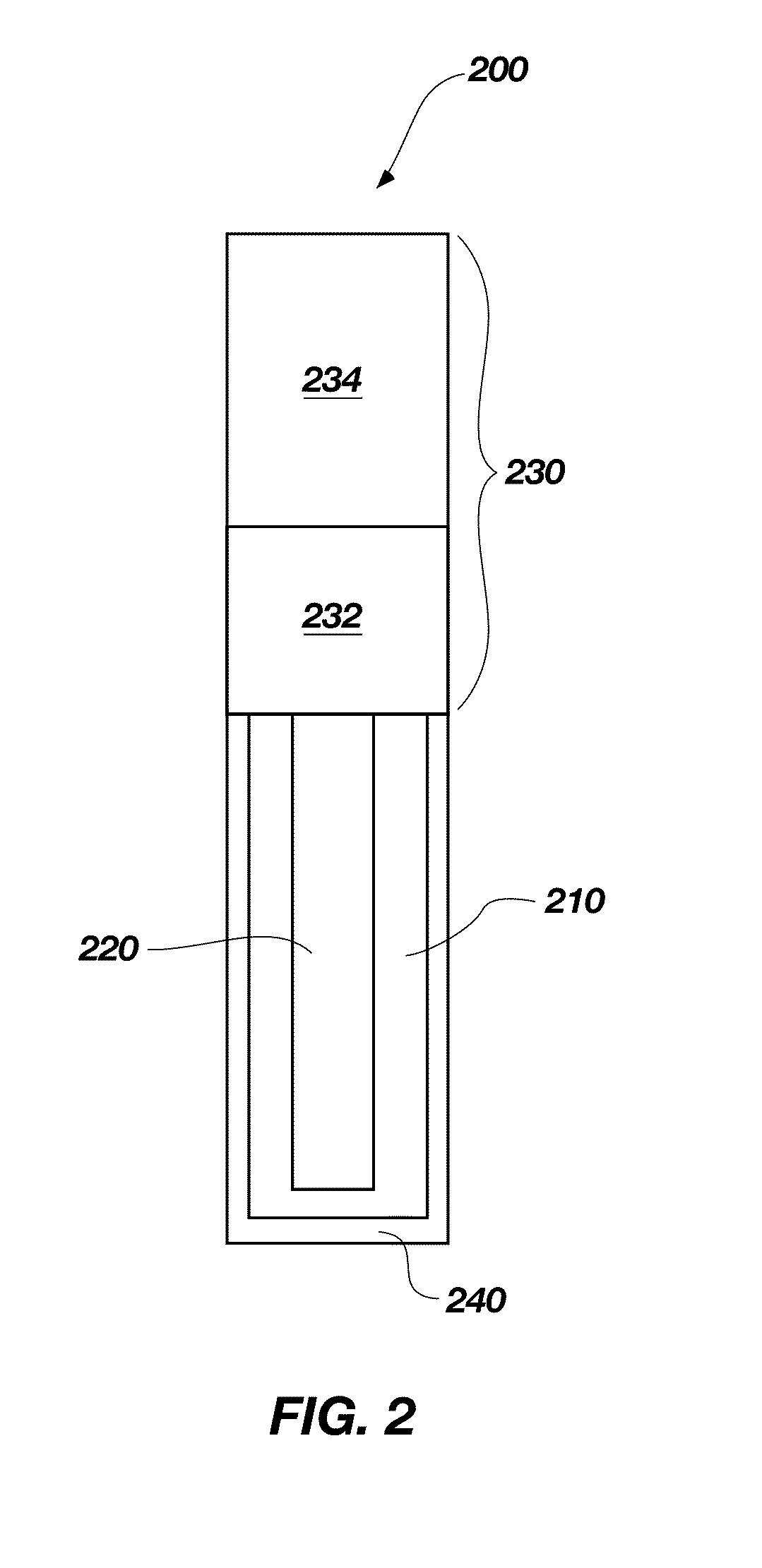Method, apparatus and system for low-energy beta particle detection
a low-energy beta particle and detection method technology, applied in the field of material detection and characterization of an environment, can solve the problems of inconvenient detection of low-energy beta particle-emitting radionuclides, affecting the detection efficiency of low-energy beta particle-emitting radionuclides, etc., and may not be useful for the detection of low-energy beta particle-emi
- Summary
- Abstract
- Description
- Claims
- Application Information
AI Technical Summary
Benefits of technology
Problems solved by technology
Method used
Image
Examples
Embodiment Construction
[0020]In the following detailed description, reference is made to the accompanying drawings which form a part hereof and, in which is shown by way of illustration, specific embodiments in which the invention may be practiced. These embodiments are described in sufficient detail to enable those of ordinary skill in the art to practice the invention, and it is to be understood that other embodiments may be utilized, and that structural, logical, and electrical changes may be made within the scope of the disclosure.
[0021]In this description, functions may be shown in block diagram form in order not to obscure the present invention in unnecessary detail. Furthermore, specific implementations shown and described are only examples and should not be construed as the only way to implement the present invention unless specified otherwise herein. It will be readily apparent to one of ordinary skill in the art that the various embodiments of the present invention may be practiced by numerous o...
PUM
 Login to View More
Login to View More Abstract
Description
Claims
Application Information
 Login to View More
Login to View More - R&D
- Intellectual Property
- Life Sciences
- Materials
- Tech Scout
- Unparalleled Data Quality
- Higher Quality Content
- 60% Fewer Hallucinations
Browse by: Latest US Patents, China's latest patents, Technical Efficacy Thesaurus, Application Domain, Technology Topic, Popular Technical Reports.
© 2025 PatSnap. All rights reserved.Legal|Privacy policy|Modern Slavery Act Transparency Statement|Sitemap|About US| Contact US: help@patsnap.com



